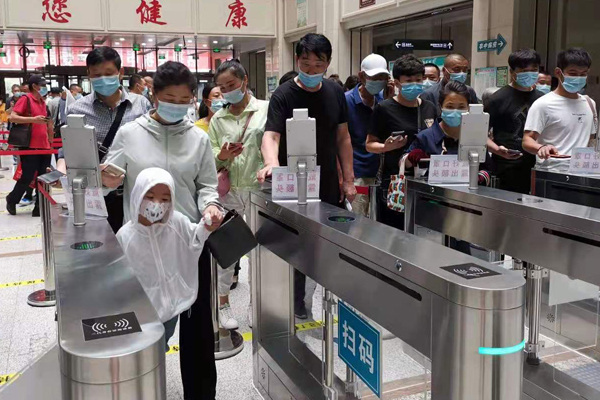Project background: When facing the recent overseas import from Nanjing Lukou Airport and the related local new epidemic which spread to many provinces and cities, Inner Mongolia Xing’an League People’s Hospital quickly made arrangements to strengthen the normalized prevention and control of the epidemic, especially for all patients, family members. Multiple epidemic prevention inspections such as mask wearing, body temperature detection and health code identification, identity verification and 14-day itinerary were under inspection, so as to maximize the safety of patients and hospital employees. However, as hospitals are the first-line key scene of joint epidemic prevention and control, a large flow of personnel is inevitable! How to use information technology to solve the pressure caused by daily prevention and control inspections in hospitals and outpatient clinics, and reduce the epidemic prevention burden of medical staff and the risk of epidemic transmission, is an important issue facing medical institutions at all levels and types.

Therefore, Xing'an League People's Hospital hopes to set up a facial temperature measurement and health code recognition all-in-one machine at each entrance of the hospital with the help of information technology such as the Internet, Internet of Things, big data, cloud computing, and smart terminals, so that one machine can handle temperature detection and health. Identification of various epidemic prevention risk information, such as code recognition, identity verification and 14-day itinerary, and quick access, one machine solves the problems of epidemic prevention and control quality and high-efficiency access, and further helps the development of hospital management and control during the epidemic period and the development of the hospital's smart service platform.
In order to fully carry out normalized prevention and control and prevention of overseas epidemics, it is necessary to fully address the large flow of people in front-line key scenes such as hospitals and outpatient clinics. Many elderly people cannot operate smartphones or cannot show health codes. , And the need for high-efficiency access, the Xing'an League People's Hospital recently launched the face recognition temperature measurement machineF3-FHRS . Persons admitted to the hospital can pass through the gate with their health code or ID card, and can simultaneously complete the "all-in-one" verification of prevention and control related information such as mask detection, face, ID card, health code, 14-day itinerary, and 48-hour nucleic acid test results. And temperature measurement effectively reduces the queuing and gathering of personnel entering the hospital, which is more conducive to the development of epidemic prevention and control work.
![S7AS8X4F5]F}U2]VOI26W_2.png S7AS8X4F5]F}U2]VOI26W_2.png](https://www.szrakinda.com/data/upload/ueditor/20210928/6152a8eb320b8.png)
Under the guidance of the epidemic prevention and control headquarters and the municipal government, this project is in cooperation with Shenzhen RAKINDA, through the deployment of F3-FHRS facial recognition thermal imaging health code verification integrated machine,temperature measurement and access control solutions jointly build a normalized epidemic prevention and control work. After the face temperature measurement and health code all-in-one machine is activated, it can be verified by the health code or ID card, body temperature, and 14-day trip. The system will automatically verify the health code status of the person with the health code big data backstage of the national government affairs platform. The green code can pass, and an exception will be prompted.
Project achievement: The introduction of an all-in-one machine with facial temperature measurement and health code recognition has effectively improved the accuracy of health code verification, reduced the waiting time, avoided frequent contact between patients and medical staff, and reduced the risk of disease transmission. It also provides more accurate and effective technical support for the normalized prevention and control of hospital epidemics.